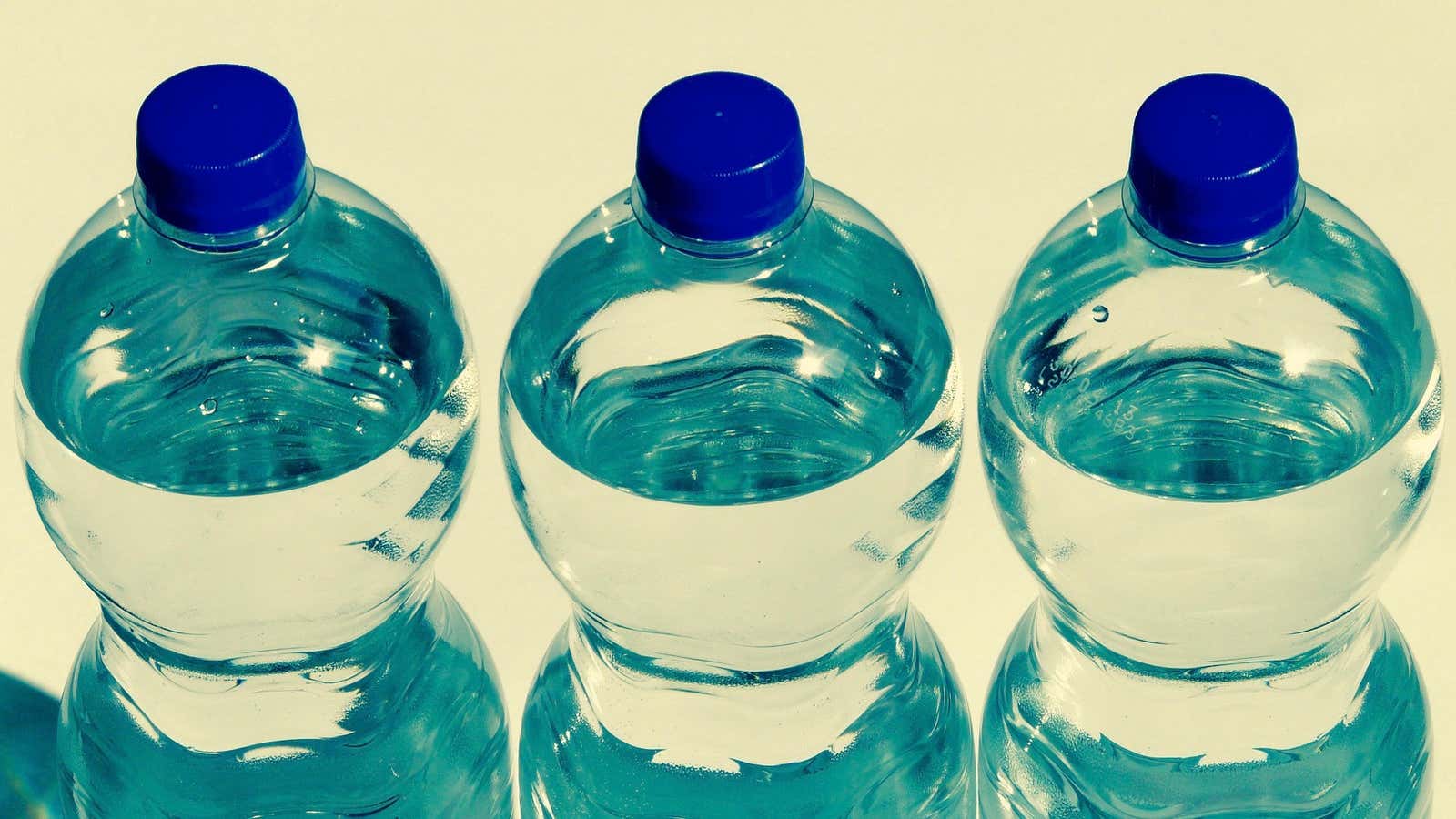It’s important to keep hydrated, of course, but would you buy bottled water if you knew the water was diverted from a forest held in public trust? Would you still pay a private enterprise for bottling the elixir of life without right?
California’s State Water Resources Control Board issued a 37-page report (pdf) on Dec. 20 warning Nestlé Waters North America to stop messing with the water flowing from Strawberry Creek in San Bernardino County. After a 20-month investigation—prompted by complaints that the company was diverting water it could not claim, using unreasonable amounts, injuring public trust resources, and misreporting water use to the tune of millions of gallons a year—the state authority told Nestlé to lay off or prove that the use is legal.
“While Nestlé may be able to claim a valid basis of right to some water in Strawberry Canyon, a significant portion of the water currently diverted by Nestlé appears to be diverted without a valid basis of right,” states the report. The company is using seven times more water than is permitted, according to local regulators.
Nestlé operates a spring water diversion facility at the headwaters of Strawberry Creek in the San Bernardino National Forest—it pays the feds $524 a year for the permit, which may be expired. The Forest Service issued a series of special use permits to the company and its predecessors starting in 1930, the most recent of which was issued in 1978 and extended until 1988.
In 2015, local publication The Desert Sun began investigating Nestlé’s continued water use under the expired permit, calling widespread attention to the alleged theft. This inspired citizen petitions and a 2016 lawsuit in federal court against the National Forest Service, seeking injunctive relief and demanding that the federal government stop the leak. The case was dismissed by a California district court, which found no problem with the permits, and is now on appeal at the 9th Circuit Court of Appeals.
Meanwhile, the state water regulator continued its investigation and concluded that Nestlé hasn’t proven all its use is valid. Though it’s too soon to say whether public trust resources were abused by the unauthorized use, the company—according to the report—does not exactly act like a responsible citizen.
Notably, Nestlé is accused of pilfering during California’s most severe drought, between 2011 and 2o15. However, the Water Board’s concern isn’t for that dire period specifically. “While several of the complaints emphasized the potential impacts of Nestlé’s diversions on water supplies and public trust resources during the drought, the major issues regarding Nestlé’s right to divert water are not drought specific,” it states.
Instead, the Water Board is looking ahead. The company has been given various deadlines and tasks to complete immediately, as well as within the next 18 months. It’s been ordered to update permits, submit a compliance plan, outline plans for monitoring and review, seek appropriate exemptions, and prove it has use to all the water it’s been taking or it will face an enforcement action, according to a letter from the regulators (pdf). The letter ends with a polite warning:
Please note that the State Water Board has the authority to initiate enforcement action at its discretion for alleged unauthorized diversion or use of water or alleged waste or unreasonable use of water. Therefore, you should take all necessary actions to ensure that your diversion is authorized, up to and including ceasing unauthorized diversions and/or use.
Nestlé spokesperson Alix Dunn focused on the upside of the findings when speaking to the local newspaper, the San Bernardino Sentinel ,on Dec. 21. Dunn emphasized authorized diversions, not the illegal use in question. “We are pleased that the report…reaffirms that we hold valid, pre-1914 surface water rights and groundwater rights to a significant amount of the water in Strawberry Canyon,” Dunn said.
The water business, which Nestlé got into in 1976 in Europe with Perrier, is highly profitable. Nestlé Waters North America has 7,500 employees and 29 bottled water facilities across the US and Canada. Its local brands (depending on the regions) are Arrowhead, Calistoga, Deer Park, Ice Mountain, Ozarka, Poland Spring, Zephyrhills, and Pure Life, which together generated annual revenues of $4 billion in 2013, according to the company website.
Some say the gains are ill-gotten. In August, citizens in Connecticut filed a federal class action lawsuit, claiming false advertising for Poland Spring water. The company claims it’s pure spring water is from a site visible on their facility. But complainants say that spring is a man-made fake, and that the company is merely bottling “ordinary groundwater” that is “collected from Maine’s most populous counties.” The suit argues that the famous Poland Spring was never proven to even exist, and if it did, it ran dry about 50 years ago, long before the company bought the water brand.
Nestlé denies wrongdoing and in October filed a motion to dismiss the lawsuit.
